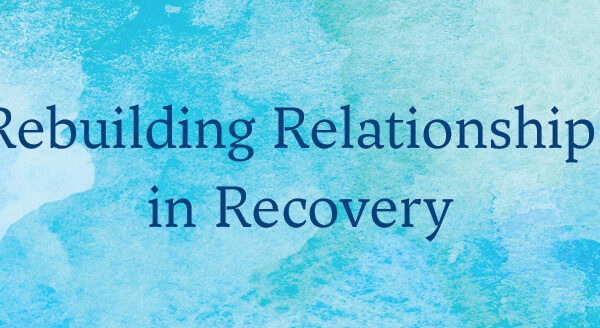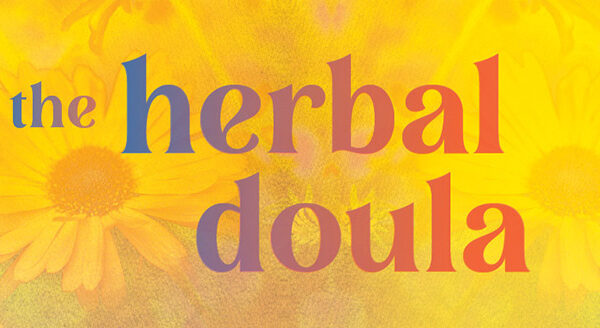
Walk No. 25: Centering Walk (a.k.a. Walking from Your Center)
Categories: General Excerpt Fitness & Sports Health & Healing
Walk 25: Centering Walk (a.k.a. Walking from Your Center)
My strength comes from my abdomen. It’s the center of gravity and the source of real power.
—BRUCE LEE
Overview
“I’m feeling uncentered.” “He’s off his center.” “She’s totally centered.”
The idea of being “centered” or “uncentered” in our daily lives is not uncommon. The first way we will address it here in the Centering Walk is the way in which it is most commonly known or referred to, and that has to do with a state of mind: You’re feeling stressed; therefore, you are not feeling centered. You’re feeling scared or nervous; therefore, you are not feeling centered. You’re “feeling off ”; therefore, you’re not feeling centered.
To alleviate this situation, you (hopefully) learn to do things like slowing yourself down, working with your breath, planting your feet on the ground, meditating, maybe even taking a walk. This helps you to clear your mind, settle your nervous system, regain a sense of balance, and “get centered.” All this will be a part of the Centering Walk. But there’s also another form of being centered, one that is related to everything mentioned above, but is also more specific. It has to do with literally connecting with and moving from your actual center, or center of gravity.
The center of gravity is the place in a system or body where the weight is evenly dispersed and all sides are in balance.
Do you know where your center is? Or more specifically, can you locate your center of gravity?
The majority of us don’t, and can’t. If you fall into this category, the answer is: When you’re standing, your center of gravity is located two inches—or three finger-widths— below your navel in the “center” of your abdomen.
Though it’s mentioned in many sports, the center, or center of gravity, is most often discussed, and its virtues imparted, in the martial arts, specifically in aikido, tai chi, and qigong. It’s often referred to as the hara in Japan and the dantian in China.
In Eastern philosophy, the hara or dantian is viewed as having physical, psychological, and spiritual elements. It is known as the “sea of qi,” the true place of concentrated power or force within the body. We will touch on this a bit—and if you’re so inclined, I encourage you to investigate further—but our main focus will be on how to connect more readily into our center of gravity, and move from this place.
First, what takes you out of your center?
For the most part, it’s worry, fear, stress, overthinking—some would even say modern life itself. And where do these things reside? The majority, although affecting the entirety of you, is guided by your thoughts, your head. When you depart the head and drop down deeper into the body, be it the heart, or the center point, not only do you establish more balance, but you also invite in fresh and needed perspective, while often quieting your thoughts.
This rings true for me. I find that when things are off or “out of whack” with my body, it’s usually because my head is controlling everything—my head has become my center—and I’ve lost out on the balance, ease, and wisdom of the body.
Interestingly, what has been called the second brain, or the enteric brain, which is part of the gut and often responsible for that “gut feeling,” is more readily available to us when we are centered.
The Japanese have an expression, koshi ga takai mono, which translates to “a person with high hips,” meaning that that person is not in a place of centered balance and strength.
Being “in your head” or “having high hips” weakens you. But when you cultivate “dropped attention”—when your attention is directed toward your center, along with the powerful area of the hips and pelvis, and all the way down to the earth—you become not only more stable, but also more fluid. (There’s a big difference between leaning into a situation with your head, and stepping or moving into a situation from your center. Try it.) Discussions and demonstrations of the center often present the “test your center of gravity techniques.” One of the more common is to stand in front of a person with your attention focused in your head, and have the person give you a light push or shove, then do the same with your attention focused on your center. The result is always the same: you feel more stable, and are less easily moved, when you are focused on your center.
It’s not so much that you have to continually live in your center, but that you develop the ability to continually return to your center, whatever the circumstance or situation. The Centering Walk will help you to develop dropped attention and establish a conscious connection to your center. This walk benefits children as well, and is a terrific way to introduce them to the concept of “being centered.”
BENEFITS
- Helps you to relax and release tension.
- Helps you to better maintain a state of balance.
- Brings you more stability and a feeling of rootedness, yet also buoyancy.
- Tends to open your breathing.
- Being centered brings with it a deeper connection to inner clarity, wisdom, and equipoise.
- Allows you to move and sense in a more intuitive manner.
- Helps you to improve posture and feel less “wobbly.”
- Connects you to a place of power.
WHEN TO DO
- When needing to feel centered.
- When wanting to improve upon your connection to your center of gravity and a place of more ease.
- When wanting to steer your focus out of your head and into your center.
- When wanting to explore movement in a more fluid manner.
- When wanting to feel stronger and more stable in your stance or walk.
- When wanting to improve your posture.
- When wanting to deepen your breathing.
- When curious about the energetic system, or qi, within your body.
- When wanting to empty out anything that keeps you from being centered, or that keeps you from being in your original nature.
- When wanting to relax.
HOW TO DO
It can be beneficial to have a partner when engaging in the Centering Walk. A partner can provide cues to help keep you in your center, and also provide feedback regarding their observations of you and your walk. You can take turns cueing and observing one another.
Whether it be indoors or outdoors, select a starting point for your walk.
Select shoes without a pronounced heel. You may also wish to walk barefoot when the location is appropriate.
A valuable affirmation to include with your Centering Walk may be: “Stable, fluid, and balanced, I move from my center with ease.” Turn off your cellphone, switch it to airplane mode, or leave it behind.
Perform your GBS Pre-Walk Check-In. Be sure to have your feet shoulder-width apart.
Now set your mind—or apply “dropped attention”—on your center. One of the ways to assist in doing this is to place your index finger on the area two inches—or three finger-widths—below your navel. (To further assist in locating your center, place the index finger of your opposite hand on the spot on your back directly in line with your finger in the front. Envision them meeting at the center of the abdomen, halfway between the two fingers.)
With your finger(s) in place, continue to tune into your center and see if you can relax even deeper, and perhaps even easier—softening your eyes, and relaxing your jaw, neck, shoulders, abdominals, thighs, and anywhere else you may be holding tension.
Lean forward, then lean back. Remain focused on your center as you do. Then come to rest in the middle.
Now close your eyes and continue standing in the middle, tuning into your center, becoming still in your center. With your spine long, with equal weight on each foot, and with your center visualized, move your hips a few times from front to back and side to side. See how connecting with your center affects your stance and your posture, and see what it is like to allow your body to organize around this space, and then ultimately walk from this place.
As you ready yourself to walk, it must be noted that there is no physical body part that represents your center, so it’s up to you to come up with something to envision. Some effective visuals that I’ve heard over the years are: a “glowing ball,” an “arrow,” a “shining pearl,” a “small steering wheel.” You can pick one of these, or a visual image of your own, and envision it to be your center point.
Pick a location somewhere in front of you. For example, if indoors, pick a point at the other side of the room; if outdoors, pick a tree or other object. You are going to walk toward it, but you will do so from (and with) your center. Focus your center point on the destination, and have your center point lead you there.
For most of us, this requires a new type of focus. And it may feel odd, since you may have never walked with your mental focus anywhere else but in your head, focusing solely from behind your eyes. But soon, if it does not happen immediately, you will see that it becomes quite natural—and may even immediately feel good.
As you walk, remain aware of your footsteps, your breath moving in and out of your belly, and the workings of your legs, hips, and pelvis as you continue to select places to walk toward—or just walk in general— allowing the glowing ball, or whatever you’ve chosen, to lead.
When you turn around, you can envision your center point turning.
Walk whatever distance and length of time you prefer. Remember, it’s not about having to always remain in your center, but about being able to return to it when you lose it. (To assist you, use the breath, your chosen visual image, and the touch of your finger(s) two inches below the navel.)
Take turns alternating between your regular walk (with focus coming from behind your eyes) and your dropped attention, Centering Walk. Pay attention to what you notice.
Observe your thoughts, feelings, and emotions while walking from your center.
Keep your spine long, feeling the linked connection between your head and pelvis, and keep your feet connected to the ground.
Allow your arms to move naturally as you walk.
No matter the distance chosen, or how successful this attempt was, complete your Centering Walk knowing that you have discovered a new way to move your body through space—and that’s exciting.
Additional Practices You May Wish to Implement
Apply soft, relaxed eyes (see the Soft Gaze Walk) and then go back to your regular way of seeing.
Try this walk with your eyes closed. With your partner or a spotter at your side, close your eyes and walk from your center.
Allow your abdominals and core to remain soft as you allow your breath to wash through and connect into this place within you—your hara, dantian, or sea of qi—and see if you can allow this center space to radiate energy all the way out to your fingertips and toes, as you advance from your center.
Try walking up and down stairs from your center.
Try walking backward from your center.
As you become more comfortable with this type of walk, try tuning into and moving from your center when you’re wearing a backpack, pushing a stroller, carrying groceries, etc.
TAKEAWAYS AND REFLECTIONS
What was your Centering Walk experience like? Were you able to connect to this specific space within you? If so, did it shift the way in which you stood? Did you feel more stable, more connected to your legs? How did your body feel when you walked from your center point?
Could you feel yourself—and perhaps your thoughts—leaving your head and becoming more embodied and centered? Did you perhaps feel a bit taller? Lighter? Less stressed? More grounded? Did it improve your posture, or give you greater awareness of your posture?
Did you sense or feel a connection to the concentrated place of power—or sea of qi—in your center?
Remember, your connection to your center is most available to you when you are present and relaxed. And you are most present and relaxed when you are aware of—and dropped down into—your center. As stated earlier, breath awareness is a helpful tool for keeping you in your center—as is visualizing your center point and occasionally touching the area two inches below your navel throughout your day.
Jot down or make mental notes of any takeaways and reflections you may have relating to your Centering Walk. Like all things new to you, being centered—and moving from or with your center—takes practice. But in this case, the practice itself is of great value. As always, there is no perfection, and your center knows this, so don’t make it hard on yourself. Whether it be in the physical, psychological, or spiritual sense, your center is always there for you.




